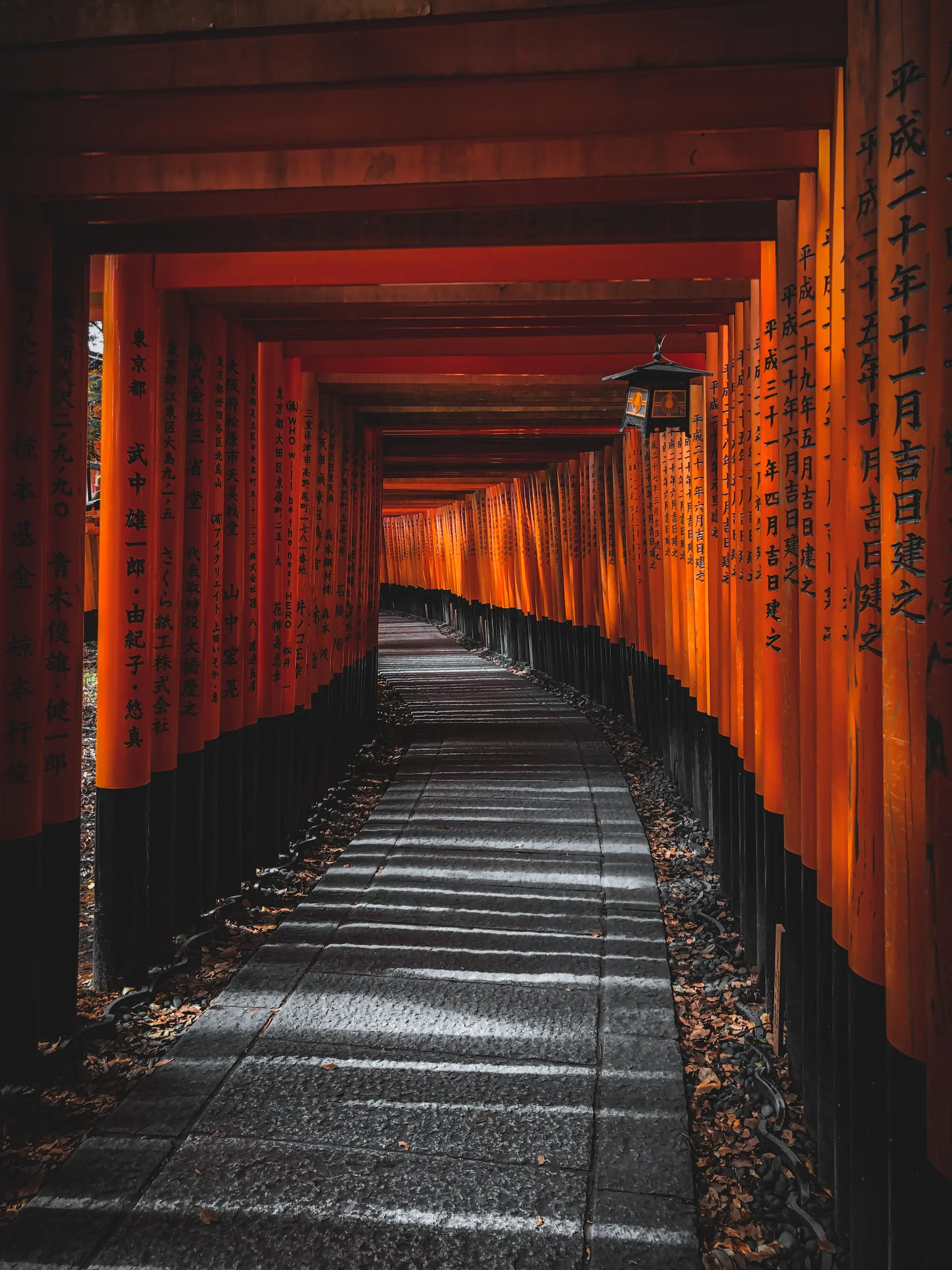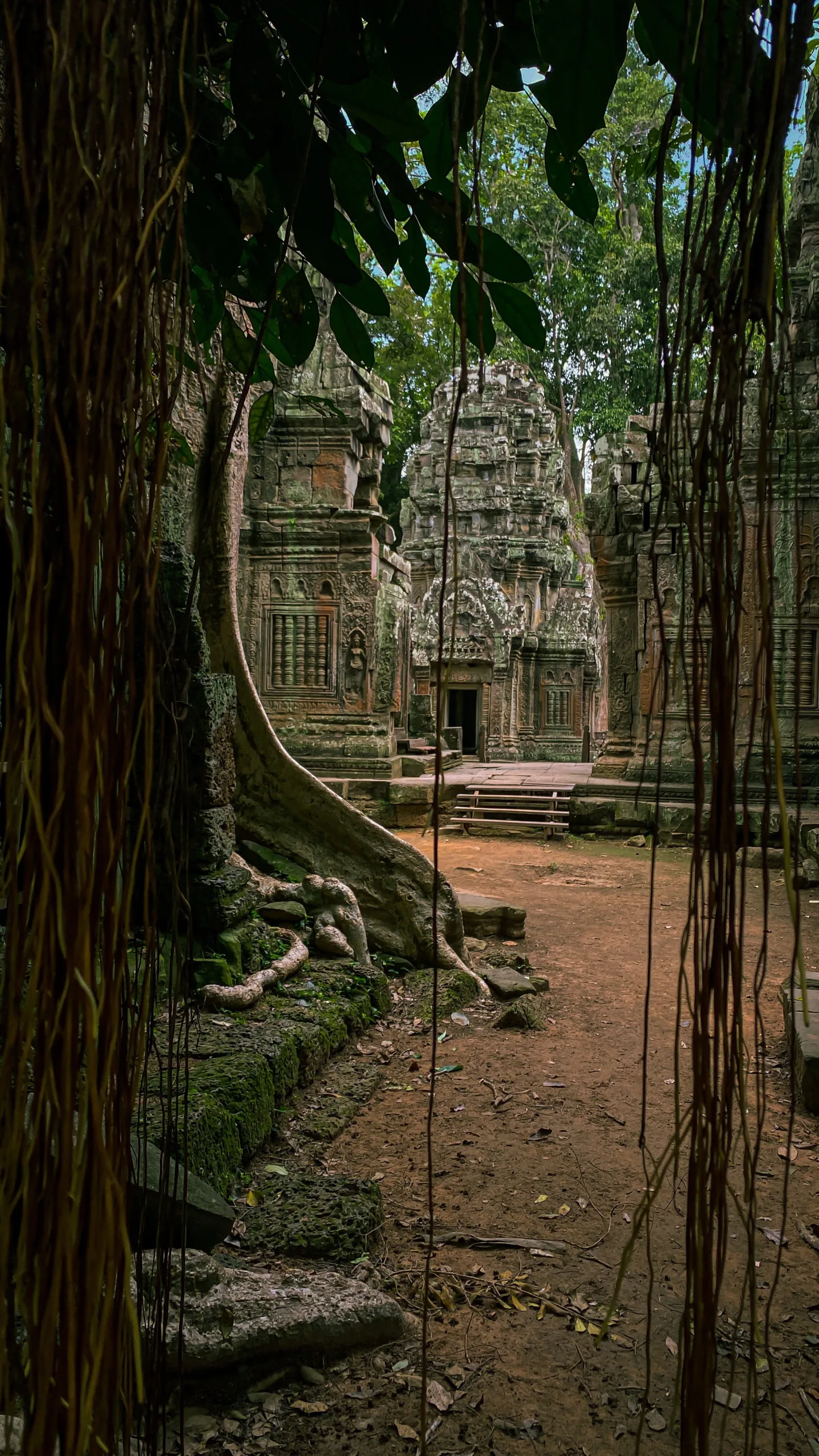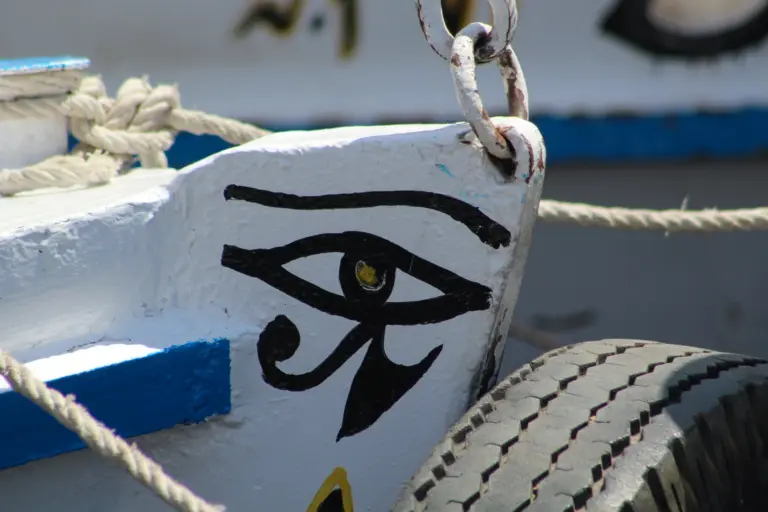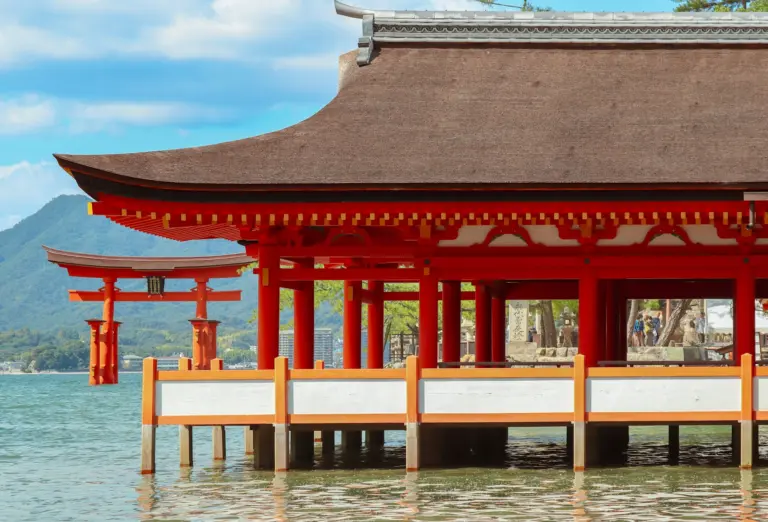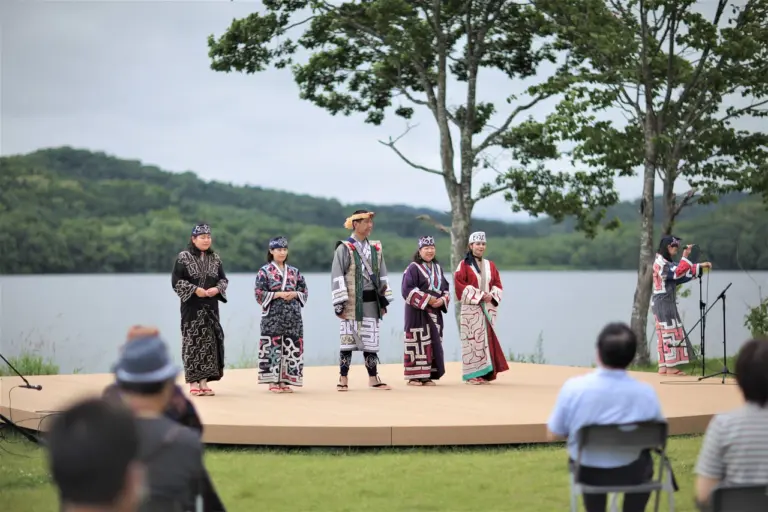The Ramayana. It’s not just a story – it’s an epic that reverberates throughout the cultures of India and beyond. Meaning “Rama’s Journey” in English, it’s a tale that transcends time and space, passed down through oral tradition for more than 2,000 years.
Penned by the sage Valmiki, the narrative unfolds around Rama, a prince with exceptional virtues, and it mirrors the intricate dance of life and the indomitable human spirit.
My personal journey into Hinduism led me to this cultural masterpiece. The profound themes explored within its verses have left a mark on my very being. Its wisdom is so rich and nuanced that I find myself returning to its pages time and again, each reading revealing a fresh layer of insight.
I think the world should know about the story of Rama and Sita, so in this article let’s explore the story (though what I have doesn’t even begin to scratch the surface) and some of the life lessons and themes of this timeless classic.
Jai Sri Ram!
Table of Contents
ToggleThe Ramayana in Various Cultures
While the Ramayana originated in India, it has since spread to many other cultures, where it has been adapted and retold in a variety of ways. Here are just some of them:
- Cambodia: known as “Reamker” in Cambodia, you can find it depicted in carvings on the walls of the Angkor Wat temple complex. The carvings show scenes from the epic, including the battle between Rama and Ravana.
- Philippines: there is a version of the Ramayana known as the Maharadia Lawana. It tells the story of Rama and Sita, but with a Filipino twist. Here, Rama is known as Radiya Mangandiri and Sita is known as Towan Potri Malano Tihaya.
- Indonesia: the Ramayana is known as the “Kakawin Ramayana.” You can find it’s influence in the Kecak dance performed in Bali.
- Malaysia: the Ramayana is known as the “Hikayat Seri Rama.” The Hikayat Seri Rama is often performed as thewayang kulit, a traditional form of shadow puppetry.
- Thailand: the Ramayana is known as the “Ramakien,” which means “Glory of Rama.” The Ramakien is often depicted in murals especially in the Royal Grand Palace in Bangkok, and it is also performed as a traditional dance-drama known as Khon. The King of Thailand is even named after Rama!
What is the Story of the Ramayana?
Now, I really want to give justice to the Ramayana so instead of just one summary, let’s go through the entire journey of Rama.
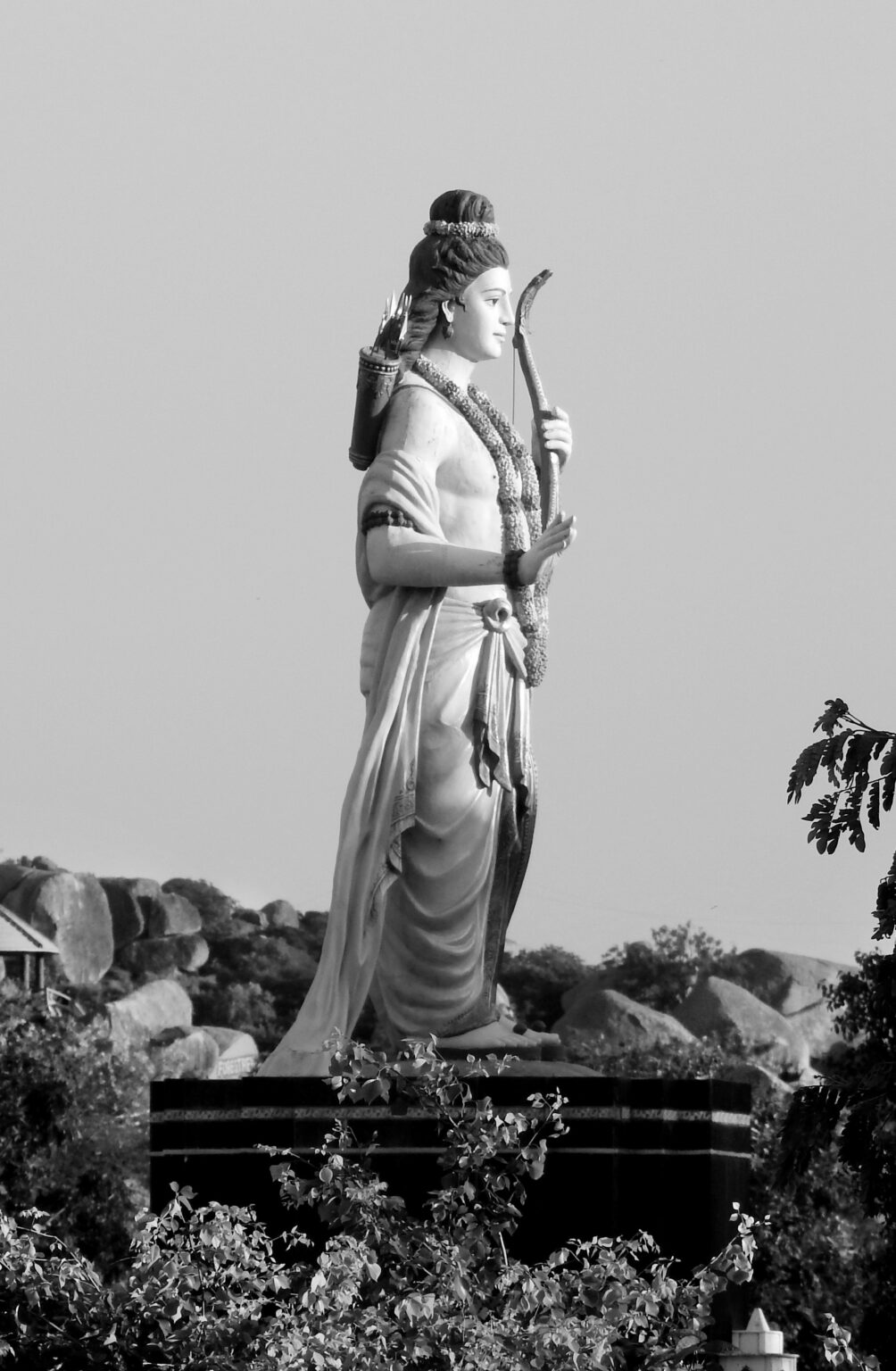
Rama
The Ramayana begins with the cosmos itself. The gods were troubled by the demon king Ravana, who had obtained a boon making him invincible against gods and other celestial beings with the exception of humans. Fearing his tyranny, they pleaded with Lord Vishnu (the God who Preserves the World) for help. In response, Vishnu decided to incarnate on Earth to vanquish Ravana.
Enter the scene, King Dasharatha of Ayodhya. The ruler was blessed with prosperity, but he was deeply saddened by his childlessness. In a bid to attain heirs, he performed the Putrakameshti Yagna, a sacred ritual. The celestial being Agni (the God of Fire) emerged from the sacrificial fire, offering a divine nectar. Upon consuming it, Dasharatha’s three queens conceived.
Born as the eldest son to Queen Kaushalya, Rama was the human incarnation of Vishnu himself. His brothers – Bharata, Lakshmana, and Shatrughna – were partial aspects of Vishnu, born to the other queens. Raised as princes, these four brothers grew to exhibit noble qualities, embodying the principles of dharma.
But it was Rama who shone the brightest. From a young age, he displayed unmatched wisdom, courage, and compassion.
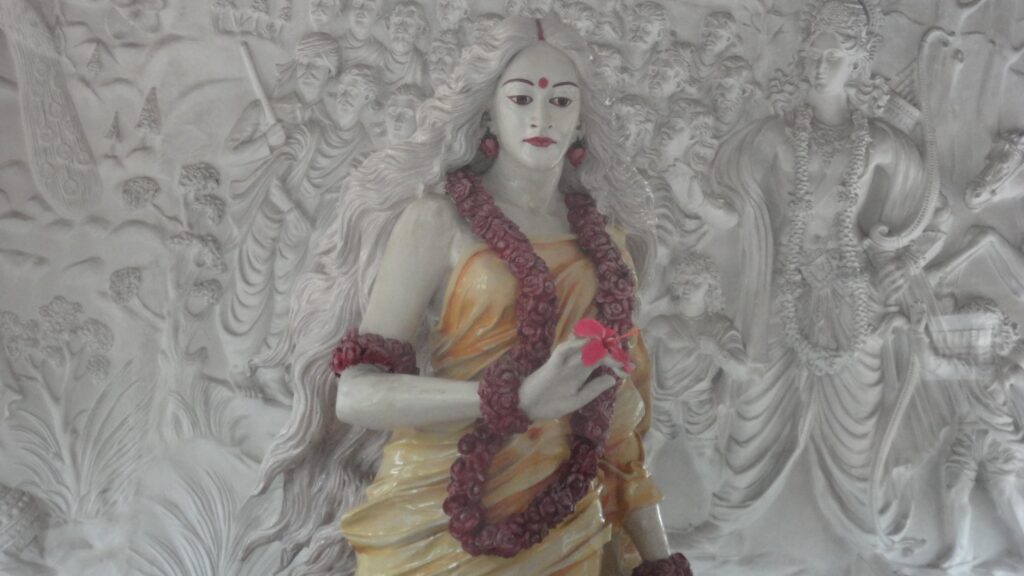
Sita
Sita was not born in the conventional sense but was discovered by King Janaka, the ruler of Mithila.
The story goes that one day, as King Janaka was plowing the fields to perform a Yajna, a sacred ritual, he unearthed a golden casket. To his astonishment, inside the casket lay a baby girl, radiating divine light. Recognizing this as a divine intervention, King Janaka decided to adopt the baby as his own daughter, naming her Sita – derived from the Sanskrit word ‘seeta’, meaning a furrow, signifying her earthly origin.
As a daughter of the Earth (Bhumi Devi), Sita embodied fertility, abundance, and moral purity. While Rama is the human incarnation of Vishnu, Sita is the incarnation of Lakshmi, the Goddess of Wealth and Vishnu’s consort. You can find her mantra here if you are curious.
Rama and Sita
Rama’s youth was marked by both serenity and adventure. Under the watchful eyes of his parents and the wise counsel of his preceptor Vashishta, he mastered the royal arts, growing into a prince admired and loved by all.
However, it was under the tutelage of Sage Vishwamitra that Rama’s heroism began to manifest. The sage took Rama and his devoted brother Lakshmana to protect his ashram (hermitage) from the disruptive demons Maricha and Subahu. The brothers successfully vanquished them, establishing peace and earning Vishwamitra’s deep admiration.
Vishwamitra then led the brothers to the kingdom of Mithila, where King Janaka had proposed a challenge: to win the hand of his beautiful and virtuous daughter Sita, one must string the mighty bow of Lord Shiva (the God of Destruction). Many had tried and failed, their pride shattered. Yet, when Rama approached the bow, he lifted it with grace and broke it in the process of stringing it, shaking the very cosmos.
Overwhelmed by Rama’s feat, King Janaka gave his daughter’s hand in marriage to Rama. The couple radiated divine love and virtue, becoming ideals of marital love.

The Exile
Rama’s life took a sharp turn when his stepmother, Kaikeyi, demanded that her son Bharata be crowned king and Rama be exiled for fourteen years. This she did under the influence of her maid Manthara, who instigated Kaikeyi out of jealousy and fear. King Dasharatha, bound by the promise he once gave to Kaikeyi, was left with no choice but to fulfill her wishes. It was a decision that broke his heart, leading to his eventual demise.
However, Rama, ever the dutiful son, accepted his exile without bitterness or resentment. His wife Sita and brother Lakshmana, bound by love and loyalty, decided to accompany him. They relinquished the comforts of the palace and embraced the austere life of the forest, their hearts filled with acceptance and courage.
Bharata, on the other hand, was a loyal brother through and through. When he found out about what his mother had done, he was horrified and immediately denounced her actions. He refused to take the throne, considering it rightfully belonged to Rama.
Devastated by the turn of events, Bharata set off to find Rama in the forest and plead with him to return to Ayodhya and assume his rightful position as king. However, Rama, committed to honoring his father’s decree, declined.
As a symbol of his unwavering dedication to Rama, Bharata took Rama’s sandals and placed them on the throne, ruling as Rama’s regent, not as king, until Rama’s return from exile.
The forest life was not devoid of challenges for the three exiles. They encountered sages, fulfilled their duties as Kshatriyas (warrior in Sanskrit) by protecting them from demons, and met myriad creatures of the forest.
One of them being, Shurpanakha, the demoness sister of Ravana. She was attracted to the handsome Rama and proposed marriage to him. However, Rama, who was devoted to Sita, turned her down. Shurpanakha then approached Lakshmana, who also rejected her.
Feeling insulted and humiliated, Shurpanakha attacked Sita, but Lakshmana intervened and ended up disfiguring Shurpanakha by cutting off her nose and ears.
Shurpanakha fled back to Lanka and recounted the whole incident to Ravana, sparking his fury.
The Abduction of Sita by Ravana
The tranquility of the forest was shattered when Ravana, the powerful king of Lanka, set his eyes on Sita. Ravana, the ten-headed demon king, was a force to be reckoned with, and his heart was as hard as his invincible body. Enchanted by Sita’s beauty and virtue, and driven by his desire to possess her, he devised a plan to abduct her.
Ravana enlisted the help of Maricha, a demon who had the ability to change his form at will. Maricha then transformed into a dazzling golden deer.
While living in the forest, Sita saw this enchanting creature and, captivated by its beauty, asked Rama to capture it for her. Rama, sensing something amiss, was reluctant but, moved by Sita’s request and his love for her, he decided to go after the deer.
Before leaving, Rama instructed Lakshmana to protect Sita and not to leave her alone under any circumstances. It was during his pursuit of the golden deer that Ravana seized the opportunity to kidnap Sita.
The golden deer, being a demon in disguise, let out a distressing cry mimicking Rama’s voice. Hearing this, Sita was filled with fear and asked Lakshmana to go help Rama. Lakshmana, however, was not easily convinced. He knew Rama’s prowess and believed that nothing in the forest could harm him.
However, Sita, in her anxiety, misinterpreted Lakshmana’s reluctance as insensitivity and even accused him of wanting Rama dead so he could marry her. Hurt and bound by his duty to protect Sita’s happiness, Lakshmana decided to go in search of Rama, albeit reluctantly. He drew a protective circle, known as Lakshmana Rekha, around their hut and instructed Sita not to step outside it under any circumstances.
After Rama and Lakshmana left Sita alone, Ravana saw his chance to strike. The ten-headed demon king had been waiting for an opportunity to get his revenge on Rama and Lakshmana for the humiliation of his sister, Shurpanakha. Seeing Sita alone and unprotected, Ravana disguised himself as a wandering sage and approached Sita, asking for food.
Sita, being virtuous and hospitable, stepped outside the protective circle drawn by Lakshmana to offer food to the “sage”. At this moment, Ravana dropped his disguise and kidnapped Sita, taking her to his kingdom in Lanka.
Upon their return, Rama and Lakshmana were devastated to find Sita missing. Rama was distraught, his heart aching with loss, his mind clouded with worry. However, he didn’t succumb to his grief. Instead, he resolved to find Sita and bring her back safely.

Jatayu
Just as Ravana was whisking Sita away in his chariot, Jatayu, the noble king of the birds, spots them. Recognizing the evil intent of Ravana, Jatayu swoops down to confront him, despite his advanced age. The old bird fights valiantly, trying to rescue Sita and prevent Ravana’s disgraceful act.
However, Jatayu is no match for the powerful demon king. He is severely wounded in the ensuing battle and eventually falls to the ground, unable to keep up the fight.
Later, Rama and Lakshmana come across the injured Jatayu in their search for Sita. Jatayu tells them about Sita’s abduction and Ravana’s involvement before breathing his last in Rama’s lap. Rama performs the last rites for Jatayu, treating him like his own father.
Sugriva and Vali
In their search for Sita, Rama and Lakshmana encounter Sugriva, the rightful king of the Vanaras (a race of monkey-like forest-dwelling people), who’s living in exile due to fear of his brother, Vali. Vali and Sugriva had once been close but fell out due to a misunderstanding. Vali had wrongly assumed that Sugriva was plotting against him and, in a fit of rage, banished him from the kingdom.
When Sugriva learns of Rama’s predicament, he sees a potential ally. In return for Rama’s assistance in dealing with Vali, Sugriva pledges to help Rama find Sita. A pact is struck and, with Rama’s aid, Sugriva challenges Vali to a duel.
Rama, hidden, strikes Vali from behind with an arrow, fatally wounding him. Before dying, Vali realizes his misjudgment of Sugriva and reconciles with him. He also acknowledges Rama’s righteousness.
With Vali’s death, Sugriva is reinstated as the king of the Vanaras. True to his word, he mobilizes his troops to help Rama, leading to the eventual discovery of Sita’s whereabouts.

Hanuman
After Rama helps Sugriva regain his kingdom, Sugriva promises to help Rama find Sita. This is when we are introduced to Hanuman, one of the Vanara and a partial-avatar of Shiva. He is also Sugriva’s devoted aide and a fervent devotee of Rama.
Hanuman takes on the daunting task of finding Sita. Using his divine powers, he leaps across the ocean, overcoming numerous obstacles along the way. His journey leads him to Lanka, where he finally finds Sita in Ashok Vatika, a garden in Ravana’s palace. Despite being held captive, Sita remains steadfast and refuses to submit to Ravana.
Hanuman’s meeting with Sita is a touching scene. He reassures her that Rama is doing everything in his power to rescue her and gives her Rama’s signet ring as a symbol of hope.
After meeting Sita, Hanuman takes the opportunity to assess the strength of Ravana’s army. He goes full ape on Lanka and by wreaking havoc and setting the city on fire with his burning tail, even after being captured by Ravana’s forces.
Then, he returns to Rama with the vital information about Sita’s location and the enemy’s strength. His successful mission earns him Rama’s deep gratitude and further cements their bond.

The Battle of Lanka
The stage was set for the epic Battle of Lanka. The allies of Rama, primarily the Vanara army under the command of Sugriva and the wise Hanuman, prepared to march towards Lanka.
A monumental task was undertaken to build a bridge across the sea to reach the island kingdom. This miraculous feat came to be known as Rama Setu (Rama’s Bridge).
Upon reaching Lanka, they faced the formidable forces of Ravana. Despite being outnumbered, the dedication, courage, and righteousness of Rama and his allies shone through.
Key to their success was the defection of Ravana’s younger brother, Vibhishana, to Rama’s side. Disillusioned by Ravana’s actions, Vibhishana provided crucial intelligence about Ravana’s army and strategy.
Let’s not forget Hanuman’s remarkable feats during this battle. At one point, Lakshmana was gravely injured and the only cure was a herb located on a distant mountain in the Himalayas. With no time to spare, Hanuman took on the task. But on reaching the mountain, he was uncertain about identifying the correct herb. So, what did he do? Well, he simply lifted the entire mountain and brought it back to the battlefield!
The battle raged on, marked by spectacular encounters between Rama and Ravana’s champions. The turning point came when Rama invoked the divine “Brahmastra” arrow. This mighty weapon, gifted to him by his guru Vishwamitra, found its mark, ending the tyrannical reign of Ravana.
Return to Ayodhya
After the defeat of Ravana, the victorious Rama, Sita, and Lakshmana began their return to Ayodhya. Their journey home was a joyous one, marked by celebrations at every juncture. After a long and tumultuous exile, the trio was finally coming home.
Upon their return, they were welcomed with a grand celebration. The people of Ayodhya, who had awaited Rama’s return for years, lit their city with rows of lamps, a tradition that is celebrated to this day as the festival of Diwali (Festival of Lights)
Rama’s coronation was a historic event. He ascended the throne with Sita by his side, beginning an era known as Rama Rajya, characterized by peace, prosperity, and justice. Rama proved to be a wise and just king, and his rule is considered the golden age in the history of Ayodhya.
Sita's Trial
The triumphant return and coronation of Rama did not signify an end to the tribulations faced by Rama and Sita.
Despite her unwavering loyalty to Rama, and having resisted Ravana’s advances for months, Sita was subjected to public scrutiny and doubt regarding her purity, having lived in the enemy’s kingdom.
Rama, being a prince and a future king, was duty-bound to his subjects. Although aware of Sita’s innocence, Rama found himself caught between his personal belief and his royal duty. He had to address the murmurs of doubt among his subjects. Even despite the dismay of the ever-loyal Lakshmana and other close comrades, Rama, with a heavy heart, requested Sita to prove her purity through the trial by fire.
Sita, on her part, agreed without hesitation to the test, confident in her own purity and virtue. She walked into the blazing fire with firm resolve, while the onlookers watched with bated breath. To their astonishment, the fire did not harm Sita. Instead, Agni, the god of fire, protected her and presented her unscathed to Rama, thus vindicating her chastity. With this Rama and Sita were finally able to live happily for the rest of their days.
Uttara Kanda
The Uttara Kanda is the seventh and final book of the Ramayana. It is also known as the “Epilogue” or the “Later Book” and is considered a later addition to the original narrative.
If you’re already satisfied with the ending above, then you can end it there as the Uttara Kanda continues the narrative into even more turmoil:
However, despite passing the test, Sita’s ordeal did not end.
Once back in Ayodhya, a slanderous remark by a washerman cast doubts over her chastity, causing a rift in the palace and the kingdom.
Rama, as a dutiful king, felt compelled to make another heart-wrenching decision – he sent the pregnant Sita into exile. Sita, demonstrating her resilience, courage, and undying love for Rama, accepted her fate. In the hermitage of Sage Valmiki, she gave birth to twin sons, Luv and Kush, raising them single-handedly and instilling in them the virtues and valour of their lineage.
The boys, oblivious to their royal blood, grew up imbibing the wisdom of the sage and the courage of their mother. Their prowess was eventually revealed when they confronted Rama’s army in a surprising twist of events, leading to the emotional reunion of Rama with his sons.
Yet, the wheel of karma had not come full circle. Rama, in his joy at finding his sons, asked Sita to return to the palace. But Sita, weary of the world’s ways and her trials, chose instead to return to her mother, the Earth.
With Sita’s departure, Rama’s joy faded. He continued his kingly duties, upholding Dharma and ruling wisely. However, he lived out his days in the shadow of his profound loss. Eventually, Rama ended his earthly journey through Jal Samadhi (surrendering himself to the Sarayu River) symbolically reuniting with Sita in the afterlife.
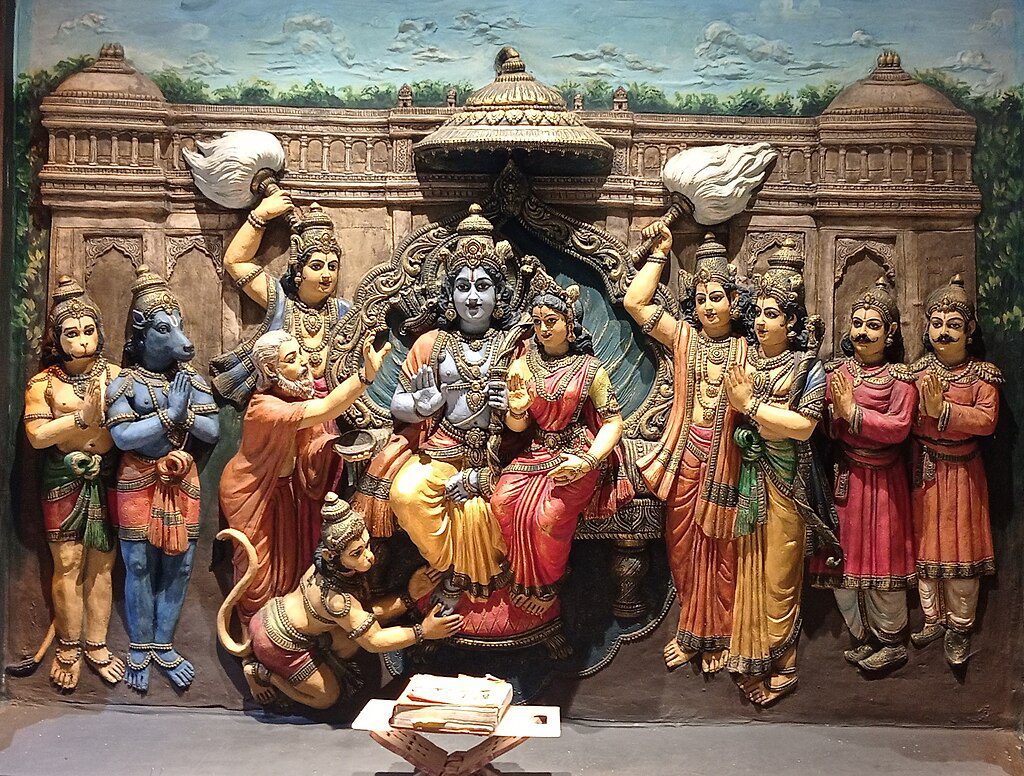
Why is the Ramayana Important?
In essence, the Ramayana is not just an epic. It’s a guide to life, an exploration of human virtues and vices, a repository of wisdom, and a cornerstone of Indian culture. It holds invaluable lessons for humanity that remain relevant even in the contemporary world.
There are several instances in the Ramayana that invite us to reflect deeply on our own perceptions of morality and societal norms.
The story of Rama and Sita’s trial by fire is particularly thought-provoking. In the face of societal pressure, Rama asks Sita, his beloved wife, to prove her purity. This request, coming from Rama, who is otherwise revered as an embodiment of righteousness, poses difficult questions about societal norms and the balance between personal relationships and public image.
Interestingly, in some versions of the Ramayana, Rama indeed harbors doubts about Sita’s chastity after her prolonged captivity in Ravana’s palace. In these interpretations, Rama’s internal struggle reflects the very human nature to doubt (he is human after all). His eventual demand for a public test of purity reveals the difficult choices one often needs to make, as a leader and as an individual, when public duty and personal feelings conflict.
Then, there’s the complex scenario of Rama killing Vali, the Vanara king and Sugriva’s brother. The act was done from a hidden vantage point, which raises significant ethical questions as it was against the Kshatriya code (Warrior’s code). Vali was killed without having a chance to face his opponent, a circumstance that contradicts the established norms of a fair fight. This incident forces us to confront the sometimes-blurred lines between right and wrong, even when our actions are guided by greater objectives.
Even for the antagonist. Ravana’s abduction of Sita is a pivotal event in the Ramayana. Ravana, although a villain, is portrayed as a deeply learned scholar and a devout Shiva bhakt (devotee). The moral question arises: “How could such an enlightened being commit such an act?” This dichotomy is a reminder of the complexity of human nature, where virtues and vices coexist.
Finally, the banishment of Sita during her pregnancy, an act prompted by a single subject’s derogatory comment, reveals the devastating impact of hearsay and societal judgement. Despite her proven purity, Sita is exiled to live in the forest. This harsh decision taken by Rama shows the power of public opinion, for good or ill. The repercussions of this act remind us of the need for discernment, compassion, and standing up for what is right, regardless of popular opinion.
Rama’s journey in the Ramayana starts as a remarkable prince, a paragon of virtue, honor, and valor. He was initially presented as an ideal man, the perfect son, brother, husband, and king. His extraordinary qualities and his unwavering adherence to Dharma set him apart. But it’s through the trials, tribulations, and moral dilemmas he faced, as well as his exemplary conduct in dealing with them, that he transcended from the realm of extraordinary mortals into the divine.
Today, Rama and Sita are unequivocally considered as deities in Hinduism, with temples dedicated to them found all over the world. The Ramayana is celebrated even in other parts of the world such as through the Kecak dance in Bali or the Wayang Kulit puppet show in Malaysia.
If it was your first time reading the Ramayana, I’m sure that’s not how you expected the tale to end. We’re so used to the happy-ever-after endings from our childhood tales that we don’t realize just what the Ramayana encompasses.
Life Lessons from the Ramayana
-
Humility and Respect: Despite being divine incarnations, Rama and Sita always exhibit humility and respect towards all beings, regardless of their status or species. This teaches us the value of humility and the importance of treating all beings with kindness and respect.
-
Karma: The Ramayana underscores the principle of Karma, showing that every action, no matter how insignificant it may seem, has consequences.
-
Forgiveness: Rama’s willingness to forgive Vibhishana, Ravana’s brother, and accept him as an ally shows us the power of forgiveness and the potential for redemption.
-
Understanding the Complexity of Good and Evil: The Ramayana invites us to explore the complexity of good and evil, beyond binary distinctions. Characters like Ravana are not just embodiments of evil, but complex figures with their own virtues and vices. This teaches us to avoid quick judgments and understand that everyone has their own struggles and virtues.
-
Inner Strength in the Face of Disgrace: Sita’s strength is not physical but moral. Despite being abducted and held captive, she never loses her dignity or her commitment to Rama. She teaches us that inner strength and self-respect can help us overcome the most challenging circumstances.
-
The Path to Enlightenment: The Ramayana also symbolizes the journey of spiritual awakening. Rama’s journey from being a prince to a king, his experiences, struggles, and realizations are metaphors for the journey one undertakes from ignorance to wisdom, from a materialistic outlook to spiritual enlightenment.
-
Living in Harmony with Nature: The Ramayana portrays an intimate relationship between humans and nature. The forests, rivers, and mountains are all integral parts of the narrative. Just like Rama, Sita and Lakshmana, we should respect and live in harmony with our environment, recognizing that we are a part of it.
-
The Fluidity of Dharma: While Rama is often seen as the embodiment of dharma, the Ramayana also shows that dharma is not rigid or universal. It is dependent on context and changes according to circumstances. This encourages us to think deeply about our own actions and their ethical implications.
-
Balance of the Head and Heart: The Ramayana teaches us the importance of balancing our intelligence and emotions. Rama is both a wise king and a loving husband. He shows that it’s not about choosing between the heart and the head, but about using both in harmony to make the best decisions.
-
Quest for Identity: The Ramayana can also be seen as a quest for identity. Rama, Sita, and even Ravana go through experiences that force them to question and understand who they truly are. This resonates with our own life journeys, where we constantly evolve and discover new aspects of ourselves.
Themes Explored by the Ramayana
-
Dharma (Righteousness): The central theme of the Ramayana is the importance of living in accordance with dharma, or moral law. Rama is often seen as the embodiment of dharma. He consistently strives to act ethically and fairly, even when it causes him personal suffering.
-
Devotion and Loyalty: The characters in the Ramayana display remarkable devotion and loyalty. Hanuman’s unwavering devotion to Rama, Sita’s steadfast loyalty to her husband even in the face of adversity, and Bharata’s loyalty to Rama demonstrate the high value placed on these virtues.
-
The Power of Good over Evil: The Ramayana underscores the triumph of good over evil. Despite the odds, Rama overcomes Ravana, symbolizing that righteousness ultimately prevails.
-
The Role of Fate and Free Will: The Ramayana explores the tension between fate and free will. While characters like Rama seem to be guided by destiny, they also make choices that impact their journeys.
-
Sacrifice and Duty: Many characters in the Ramayana make significant sacrifices out of duty. Rama gives up his rightful throne and accepts a life in exile to honor his father’s promise. Sita gives up the comforts of the palace to accompany her husband, displaying immense love and dedication.
-
Dichotomy of Good and Evil: The Ramayana explores the dichotomy of good and evil, not just through the characters of Rama and Ravana, but also within individual characters, highlighting the human capacity for both virtue and vice.

